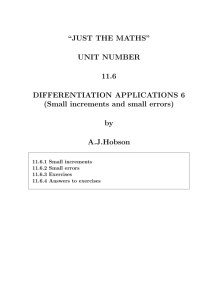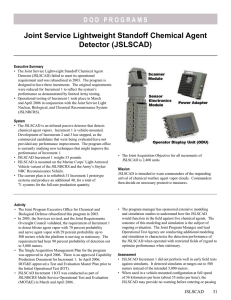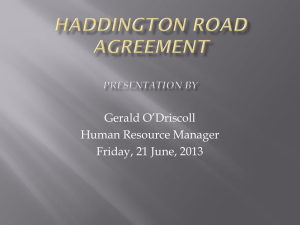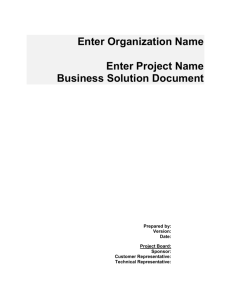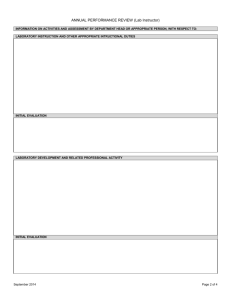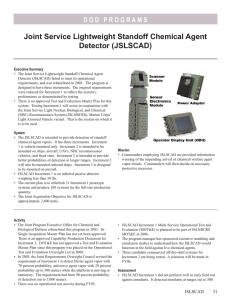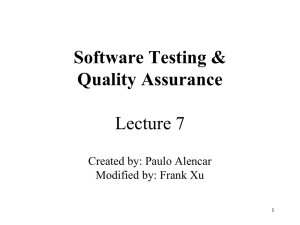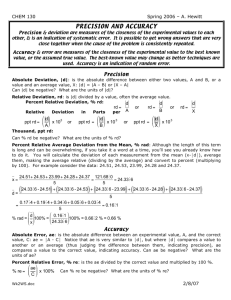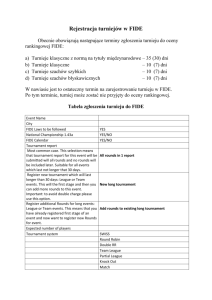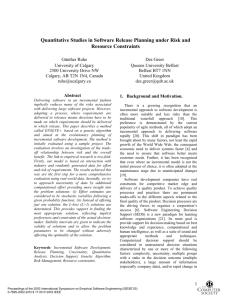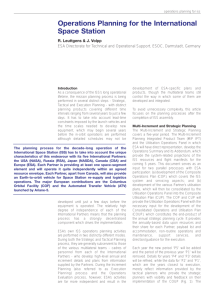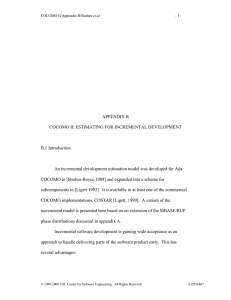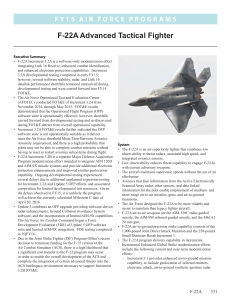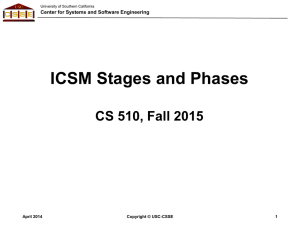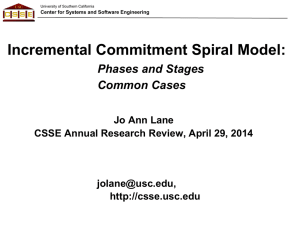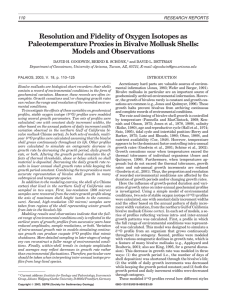Small increments and small errors
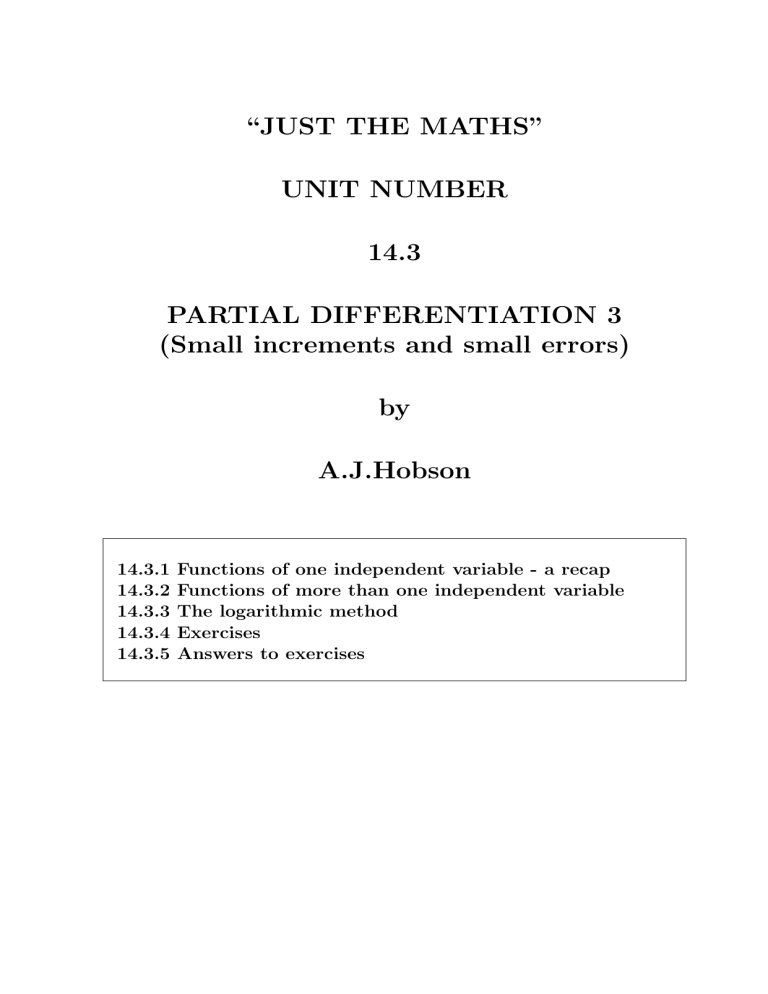
“JUST THE MATHS”
UNIT NUMBER
14.3
PARTIAL DIFFERENTIATION 3
(Small increments and small errors) by
A.J.Hobson
14.3.1 Functions of one independent variable - a recap
14.3.2 Functions of more than one independent variable
14.3.3 The logarithmic method
14.3.4 Exercises
14.3.5 Answers to exercises
UNIT 14.3 - PARTIAL DIFFERENTIATION 3
SMALL INCREMENTS AND SMALL ERRORS
14.3.1 FUNCTIONS OF ONE INDEPENDENT VARIABLE - A RECAP
For functions of one independent variable, a discussion of small increments and small errors has already taken place in Unit 11.6.
It was established that, if a dependent variable, y , is related to an independent variable, x , by means of the formula y = f ( x ) , then
(a) The increment , δy , in y , due to an increment of δx , in x is given (to the first order of approximation) by
δy ' d y d x
δx ; and, in much the same way,
(b) The error , δy , in y , due to an error of δx in x , is given (to the first order of approximation) by
δy ' d y d x
δx.
14.3.2 FUNCTIONS OF MORE THAN ONE INDEPENDENT VARIABLE
Let us consider, first, a function, z , of two independent variables, x and y , given by the formula z = f ( x, y ) .
If x is subject to a small increment (or a small error) of δx , while y remains constant, then the corrresponding increment (or error) of δz in z will be given approximately by
1
δz '
∂z
∂x
δx.
Similarly, if y is subject to a small increment (or a small error) of δy , while x remains constant, then the corresponding increment (or error) of δz in z will be given approximately by
δz '
∂z
∂y
δy.
It seems reasonable to assume, therefore, that, when x is subject to a small increment (or a small error) of δx and y is subject to a small increment (or a small error) of δy , then the corresponding increment (or error) of δz in z will be given approximately by
δz '
∂z
∂x
δx +
∂z
∂y
δy.
It may be shown that, to the first order of approximation, this is indeed true.
Notes:
(i) To prove more rigorously that the above result is true, use would have to be made of the result known as “Taylor’s Theorem” for a function of two independent variables.
In the present case, where z = f ( x, y ), it would give f ( x + δx, y + δy ) = f ( x, y ) +
∂z
∂x
δx +
∂z
∂y
δy
!
+
∂
2 z
∂x 2
( δx )
2
∂
2 z
+ 2
∂x∂y
δxδy +
∂
2 z
∂y 2
( δy )
2
!
+ . . ., which shows that
δz = f ( x + δx, y + δy ) − f ( x, y ) '
∂z
∂x
δx +
∂z
∂y
δy to the first order of approximation.
(ii) The formula for a function of two independent variables may be extended to functions of a greater number of independent variables by simply adding further appropriate terms to the right hand side.
2
For example, if w = F ( x, y, z ) , then
δw '
∂w
δx +
∂x
∂w
δy +
∂y
∂w
δz.
∂z
EXAMPLES
1. A rectangle has sides of length x cms. and y cms.
Determine, approximately, in terms of x and y , the increment in the area, A , of the rectangle when x and y are subject to increments of δx and δy , respectively.
Solution
The area, A , is given by
A = xy, so that
δA '
∂A
δx +
∂x
∂A
δy = yδx + xδy.
∂y
Note:
The exact value of δA may be seen in the following diagram:
3
δy y x δx
The difference between the approximate value and the exact value is represented by the area of the small rectangle having sides δx cms. and δy cms.
2. In measuring a rectangular block of wood, the dimensions were found to be 10cms.,
12cms and 20cms. with a possible error of ± 0 .
05 cms.
in each.
Calculate, approximately, the greatest possible error in the surface area, S , of the block and the percentage error so caused.
Solution
First, we may denote the lengths of the edges of the block by x , y and z .
z y x
The surface area, S , is given by
S = 2( xy + yz + zx ) , which has the value 1120cms 2 when x = 10cms., y = 12cms. and z = 20cms.
4
Also,
δS '
∂S
∂x
δx +
∂S
δy +
∂y
∂S
δz,
∂z which gives
δS ' 2( y + z ) δx + 2( x + z ) δy + 2( y + x ) δz ; and, on substituting x = 10, y = 12, z = 20, δx = ± 0 .
05, δy = ± 0 .
05 and δz = ± 0 .
05, we obtain
δS ' ± 2(12 + 20)(0 .
05) ± 2(10 + 20)(0 .
05) ± 2(12 + 10)(0 .
05) .
The greatest error will occur when all the terms of the above expression have the same sign. Hence, the greatest error is given by
δS max
' ± 8 .
4cms .
2
; and, since the originally calculated value was 1120, this represents a percentage error of approximately
8 .
4
±
1120
× 100 = ± 0 .
75
3. If w = x 3 z
, y 4 calculate, approximately, the percentage error in w when x is too small by 3%, y is too large by 1% and z is too large by 2%.
Solution
We have
δw '
∂w
δx +
∂x
∂w
δy +
∂y
∂w
δz.
∂z
That is,
δw '
3 x
2 z
δx − y 4
4 x
3 z
δy + y 5 x
3
δz, y 4 where
5
3 x
δx = −
100
, δy = y
100 and δz =
2 z
100
.
Thus,
δw ' x 3 z y 4
9
−
100
4
−
100
2
+
100
= −
11 w
100
.
The percentage error in w is given approximately by
δw
× 100 = − 11 .
w
That is, w is too small by approximately 11%.
14.3.3 THE LOGARITHMIC METHOD
In this section we consider again examples where it is required to calculate either a percentage increment or a percentage error.
We may conveniently use logarithms if the right hand side of the formula for the dependent variable involves a product, a quotient, or a combination of these two in which the independent variables are separated. This would be so, for instance, in the final example of the previous section.
The method is to take the natural logarithms of both sides of the equation before considering any partial derivatives; and we illustrate this, firstly, for a function of two independent variables.
Suppose that z = f ( x, y ) where f ( x, y ) is the type of function described above.
Then, ln z = ln f ( x, y ); and, if we temporarily replace ln z by w , we have a new formula
6
w = ln f ( x, y ) .
The increment (or the error) in w , when x and y are subject to increments (or errors) of δx and δy respectively, is given by
δw '
∂w
δx +
∂x
∂w
δy.
∂y
That is,
δw '
1 f ( x, y )
∂f
∂x
δx +
1 f ( x, y )
∂f
∂y
δy =
1 f ( x, y )
"
∂f
∂x
δx +
∂f
∂y
δy
#
.
In other words,
δw '
1 z
" ∂z
∂x
δx +
∂z
∂y
δy
#
.
We conclude that
δw '
δz
, z which means that the fractional increment (or error) in z approximates to the actual increment (or error) in ln z . Multiplication by 100 will, of course, convert the fractional increment
(or error) into a percentage.
Note:
The logarthmic method will apply equally well to a function of more than two independent variables where it takes the form of a product, a quotient, or a combination of these two.
7
EXAMPLES
1. If w = x 3 z
, y 4 calculate, approximately, the percentage error in w when x is too small by 3%, y is too large by 1% and z is too large by 2%.
Solution
Taking the natural logarithm of both sides of the given formula, ln w = 3 ln x + ln z − 4 ln y, giving
δw w
' 3
δx x
+
δz z
− 4
δy y
, where
δx x
3
= −
100
,
δy
= y
1
100 and
δz z
=
2
100
.
Hence,
δw
× 100 = − 9 + 2 − 4 = − 13 .
w
Thus, w is too small by approximately 11%, as before.
2. In the formula, w = s x 3
, y x is subjected to an increase of 2%. Calculate, approximately, the percentage change needed in y to ensure that w remains unchanged.
Solution
Taking the natural logarithm of both sides of the formula, ln w =
1
2
[3 ln x − ln y ] .
8
Hence,
δw
' w
1
2
"
3
δx x
−
δy
#
, y where
δx x
= 0 .
02, and we require that δw = 0.
Thus,
0 =
1 "
0 .
06 −
2
δy #
, y giving
δy
= 0 .
06 , y which means that y must be approximately 6% too large.
14.3.4 EXERCISES
1. A triangle is such that two of its sides (of length 6cms. and 8cms.) are at right-angles to each other.
Calculate, approximately, the change in the length of the hypotenuse of the triangle when the shorter side is lengthened by 0.25cms. and the longer side is shortened by
0.125cms.
2. Two sides of a triangle are measured as x = 150cms. and y = 200cms. while the angle included between them is measured as θ = 60
◦
. Calculate the area of the triangle.
If there are possible errors of ± 0 .
2cms. in the measurement of the sides and ± 1
◦ in the angle, determine, approximately, the maximum possible error in the calculated area of the triangle.
State your answers correct to the nearest whole number.
( Hint use the formula, Area =
1
2 xy sin θ ).
3. Given that the volume of a segment of a sphere is
1 x ( x 2 + 3 y 2 ) where x is the height
6 and y is the radius of the base, obtain, in terms of x and y , the percentage error in the volume when x is too large by 1% and y is too small by 0.5%.
4. If z = kx
0 .
01 y
0 .
08
, where k is a constant, calculate, approximately, the percentage change in z when x is increased by 2% and y is decreased by 1%.
9
5. If w =
5 xy
4
, z 3 calculate, approximately, the maximum percentage error in w if x , y and z are subject to errors of ± 3%, ± 2 .
5% and ± 4%, respectively.
6. If w = 2 xyz
−
1
2
, where x and z are subject to errors of 0.2%, calculate, approximately, the percentage error in y which results in w being without error.
14.3.5 ANSWERS TO EXERCISES
1. 0.05cms.
2. 12990cms .
2
3.
x
2
3 x
2
+3 y
2
.
and 161cms .
2
4.
z decreases by 0.06%.
5. 25%.
6.
− 0 .
1%.
10
